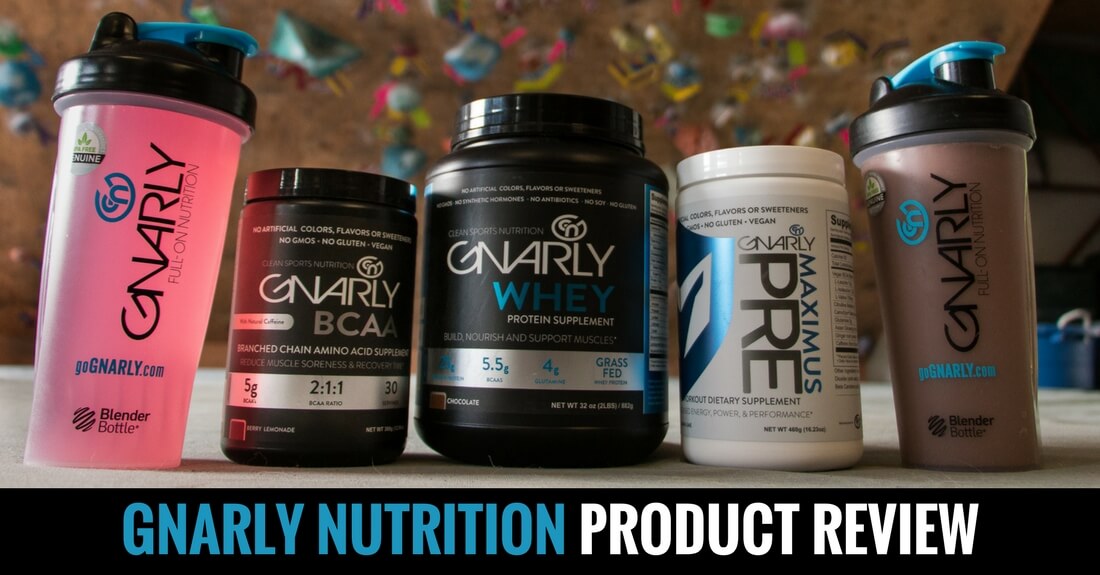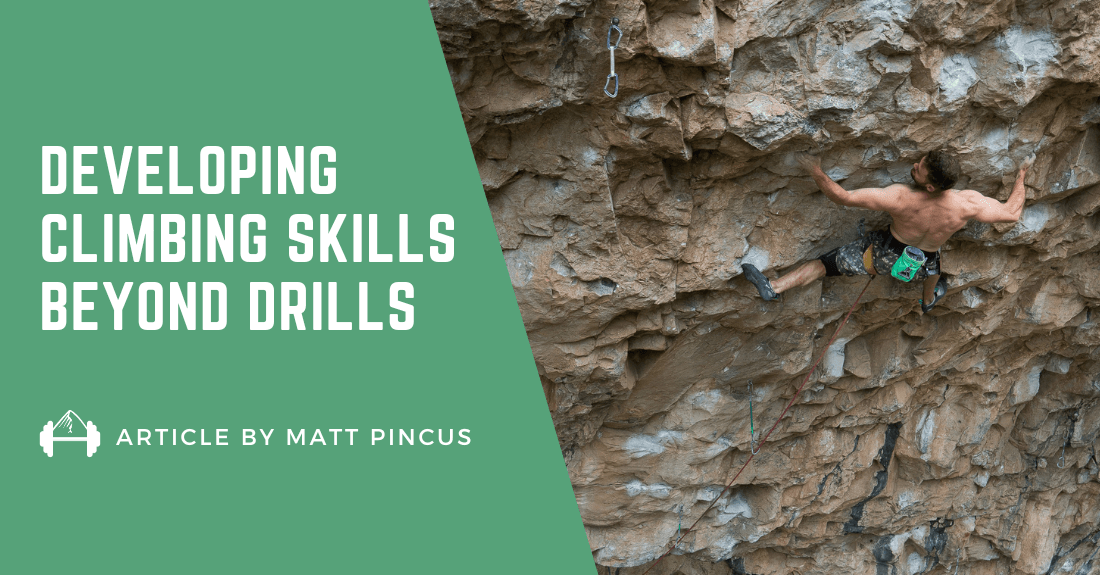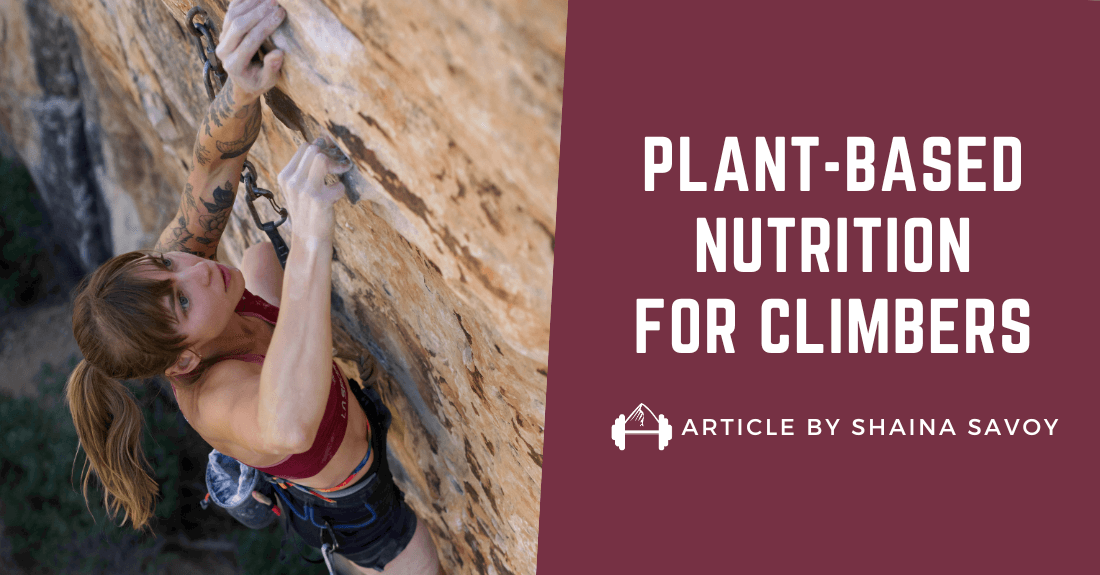Athletes in almost all major sports use supplements to help them meet their nutritional needs. However, many climbers look at supplements with skepticism. We worry that supplements will either make us bulk up like bodybuilders or that they are simply a waste of money. Having a healthy amount of skepticism when evaluating supplements (or any product promising improved performance or recovery) is wise. The reality, though, is that as climbers – even though we don’t always think of ourselves as athletes – we are engaged in an athletic endeavor. Most of us could do better at giving our bodies everything they need to perform better and recover as quickly as possible.
It was with this goal that I (Matt Pincus) reached out to Gnarly Nutrition to see which of their products they recommended I use. You can do hours and hours of reading trying to learn about exactly what our nutritional needs are and what supplements climbers should use to help meet them. However, I didn’t want to do lots of experimenting and I wanted to know exactly what Gnarly would recommend.
So I reached out to Dr. Shannon O’Grady, the head of product development for Gnarly Nutrition, and told her exactly what I would be doing. To fill her in, I informed her that I had a broken leg but was starting a training cycle with a major focus on strength training. I outlined exactly what I would be doing for training (mostly hangboarding, upper body strength work, and core training) and all my dietary restrictions (I have none).
Below are the four products Gnarly Nutrition Products Dr. O’Grady recommended and my experience using them. My goal here isn’t to give you the science behind whether or not these products are effective. I’m not going to debate the nutritional ideas behind why O’Grady recommended them. Instead, I want to describe my experience with these products and how I continue to use them.
Gnarly Nutrition BCAAs
If you are unfamiliar with BCAAs (Branched Chain Amino Acids) and their benefits, be sure to read Dr. O’Grady’s article: Why Climbers Should be Using BCAAs.
To summarize, here’s what Dr. O’Grady said as to why climbers should be supplementing with BCAAs:
“The take-home message is that supplementing with BCAAs will fuel working muscles, improve recovery, increase muscle synthesis and may help reduce feelings of fatigue on long days.” – Shannon O’Grady
Essentially, the theory behind BCAA supplementation is that by ensuring your muscles have access to BCAAs before and during exercise you are not only better fueling your muscles, but you are preventing muscle breakdown. The idea is that by preventing unnecessary muscle breakdown you can cut down on delayed onset muscle soreness (DOMS) and decrease the amount of time you need to recover from your training. Obviously, decreasing recovery time means you can effectively fit more workouts into a week/month/training cycle.
This was exactly my experience drinking the Gnarly BCAAs immediately before and during my training session.
In all the training cycles I’ve done, I’d never been able to effectively fit in more than two hangboard-included strength sessions in a week. I would always be too sore and under-recovered for a third session.
However, during this training cycle, I was able to effectively fit five strength sessions into a two week period. Essentially, it worked out to be a week of three strength sessions followed by a week of two strength sessions. This may not seem like a huge difference, but it’s a 20% increase for a two week period. Play that out over the long term and it means I’m able to fit in more quality sessions and maximize the time I spend away from the crag training.
I see this decrease in the recovery time as pretty convincing evidence that the BCAAs (or the combination of BCAAs and whey protein) were having a positive impact on the effectiveness of my training cycle. Because of this, I’ve continued to drink BCAAs every time I train or climb outside.
Caffeine
Now, Gnarly makes BCAAs in both a caffeinated and de-caf version. I opted for the caffeinated product, which contains 35mg of caffeine per serving. For me, I feel more focused and alert when caffeinated. These are two things I definitely want to be while training so I opted for the caffeinated version.
However, it’s important to note that I have a high caffeine tolerance. I drink coffee daily and find that even having an additional “pick-me-up” cup in the afternoon doesn’t impact my sleep. Caffeine affects people differently. If you’re more susceptible to caffeine, it makes you feel jittery or anxious, or if you train exclusively in the evening after work then the de-caf BCAAs are probably a better option for you.
Gnarly Nutrition Whey Protein
Athletes’ need for protein to rebuild their muscles after the stress of training is well established. However, while we all know we need to consume protein, most of us fail to eat enough of it. Here’s what the supplement oversight website Examine.com had to say about protein recommendations:
“If you are an athlete or highly active person attempting to lose body fat while preserving lean muscle mass, a daily intake of 1.5-2.2g/kg body weight (0.68-1g/lb bodyweight) is a good goal.” – Examine.com
Now, that’s a lot of protein. If you look at this more closely and think about the fact that 6oz of chicken breast contains 52gs of protein and an egg only contains 6gs, you’ll see that consuming enough protein can be quite difficult.
Additionally, simply eating meals with massive servings of protein doesn’t work either. The reason is muscle protein synthesis plateaus around 20gs. What this means is that even if you consume 40gs of protein in a sitting, your body is only really able to synthesize 20gs at a time.
Now, I weigh 160lbs. If I’m going to meet the 1g of protein per body weight guideline in servings of no more than 20gs at a time, I need to eat eight 20 gram servings per day. That’s a lot of meal prep, time cooking, and carting around of food. So, while I would never advocate people drink whey protein as a way of replacing meals, I’ve found it to be a valuable tool for meeting – or at least getting closer to – my protein goals without having to plan out eight meals a day.
Currently, I drink a shake immediately after climbing/training, try to consume one between breakfast and lunch, and one between breakfast and dinner. As I mentioned above when talking about BCAAs, I’m not sure if it’s the BCAAs, consuming more protein, or a combination of both, but I have noticed a substantial decrease in the amount of time it takes me to recover between training sessions or days out climbing. This is reason enough for me to keep using the product.
Maximus Pre
Maximus Pre is designed as a comprehensive pre-workout product. The idea behind it is that drinking it before you being training will help energize and fuel your body while delaying muscle fatigue so that you can get more out of your training session. Additionally, the thought is that by giving your body everything thing it needs during your training, you can cut down on recovery time between sessions.
Out of the four Gnarly products Dr. O’Grady recommended, Maximus Pre is the one I use the least. While I like the fact that it has beta alanine, it just has too much caffeine for me to be using it on a regular basis. As I said above, I do well really well with caffeine and it’s a daily part of my life.
However, Maximus Pre has 180mg of caffeine per serving. That’s a lot. Consuming this much caffeine, especially on top of the 35mg from the BCAAs, is simply too much for me – especially since I do the majority of my training in the evening. If I drink Maximus Pre too late in the day, it definitely impacts my sleep.
That being said, I have continued to experiment with Maximus Pre as something to consume before days of climbing or morning training sessions. My main takeaway has been that I can use it before for morning training sessions if I feel like I need a bit of an extra boost, but not for days out at the crag. My reasoning for this is that even in the morning the Pre makes me too jittery to climb effectively outside. This is especially true when sport climbing. I just feel too amped up and can’t focus on climbing efficiently, weighting my feet, relaxing, and all the other elements that go into successfully redpointing a sport route.
Ultimately, I am not completely against drinking Maximus Pre and still do so occasionally. However, I never drink it after 1:00 PM and only use it before training sessions. If you are going to use Maximus Pre, I highly recommend keeping an eye on how the caffeine impacts you.
Gnarly Nutrition Hydrate
Proper hydration is important. However, I’m easily distracted and find I often get back to the car at the end of the day having consumed very little water. During training sessions, I’m even worse. This isn’t a recipe for putting forth your best performance.
We can put aside the fact that Gnarly Hydrate does more to replace what your body loses during exercise (electrolytes, etc.) because climbing isn’t an endurance sport. We’re not out there sweating for hours like a distance runner or a cyclist. If you are, you need to re-evaluate where, how, and the conditions you’re climbing in.
That being said, I find having a flavored drink makes drinking water throughout the day far more appealing. Maybe this makes me sound like a child, but either way, I finish the day with empty water bottles rather than full ones. Additionally, Hydrate isn’t loaded up with sugar like classic sports drinks (only 4 grams per serving). This means adding flavor and additional hydration ability to your water isn’t going to cause you to consume more calories or spike your blood sugar.
Compared to BCAAs and whey protein, Hydrate probably has a less direct impact on my performance and recovery. However, if you’re like me and struggle to drink enough water throughout a day at the crag, making it taste better is a useful strategy.
I hope you’ve found this information helpful and can use it to make some more informed decisions about what products, if any, are right for you.
If you are interested in learning more about the Gnarly Nutrition products, the science behind them, and how climbers can use them to help fuel their climbing and training, definitely listen to Dr. Shanon O’Grady’s TrainingBeta Podcast Episode.
About The Author, Matt Pincus
Matt is a boulderer and a sport climber from Jackson, Wyoming, and sometimes in his van on the road. He’s responsible for most of the blog posts and social media posts for TrainingBeta. He’s a seasoned climber and trainer who can provide you with a climbing training program from anywhere in the world based on your goals, your abilities, the equipment you have, and any limitations you have with time or injuries.
Train With Matt
Matt will create a custom training program designed to help you target any weaknesses to help reach your individual goals. Whether you need a 4-week program to get you in shape for an upcoming trip or a 6-month program to make gradual strength gains, he’ll create a weekly schedule of climbing drills, strength exercises, finger strength workouts, and injury prevention exercises tailored to your situation.

Matt Pincus sending Ghost Moon 5.13d/8b at The Wild Iris, WY










Curious, in the protein review above you state,
“Additionally, simply eating meals with massive servings of protein doesn’t work either. The reason is muscle protein synthesis plateaus around 20gs. What this means is that even if you consume 40gs of protein in a sitting, your body is only really able to synthesize 20gs at a time.”,
I recall that Neely, a few weeks ago in her coverage of protein for climbers and in responding to a question about intermittent fasting that the thinking that our body can only assimilate so much protein in one sitting as being inaccurate…I can dig around to find the papers to dig in to this on my own but if y’all have any resources to clear up and clarify what’s posted in this review and what Neely touched on, that’d be great!
Hi Ryan – Great question. I dug around to try to find the article I was referring to, and I’m having a hard time finding it myself! But I did find this overview of the topic: https://jissn.biomedcentral.com/articles/10.1186/s12970-018-0215-1 and this article may have been the one I read a long time ago citing 40g: https://physoc.onlinelibrary.wiley.com/doi/full/10.14814/phy2.12893. I want to take a moment and clarify a couple things, though.
Honestly, I don’t care what the research says.
If the research said hands down that we should only be eating 20g of protein in a sitting ever, no matter how big or small we are, I would discount it as bad research or not enough research. That is a strong stance, I know, but in my experience working with people, very few people thrive on 50-60g of protein per day, which is what you’d end up eating if 20g per meal were your maximum. People come to me with low energy, poor recovery, extra body fat, etc and most of that is at least in part attributable to their low protein intake, which often looks like that 50-70g per day.
My general recommendation to people is, depending on the person’s body size, around 30-40g of protein per meal, along with a fat source, some veggies whenever possible, and some starch. That helps blood sugar stay even and stable, and it allows those amino acids to be delivered to your body over many hours of time. That balancing of the blood sugar creates fewer sugar cravings, better energy overall, better athletic performance, and better recovery. The research is definitely worth something, but it often doesn’t take into account people’s mood, energy levels, athletic performance, wellbeing, etc, which are the factors that give us a high quality of life. It just takes into account one or two blood markers, which is most likely not a holistic view of the situation.
Great reviews on Gnarly Nutrition products.
I have been interested in their product line-up ever since but needed more information about them, and this article did it.